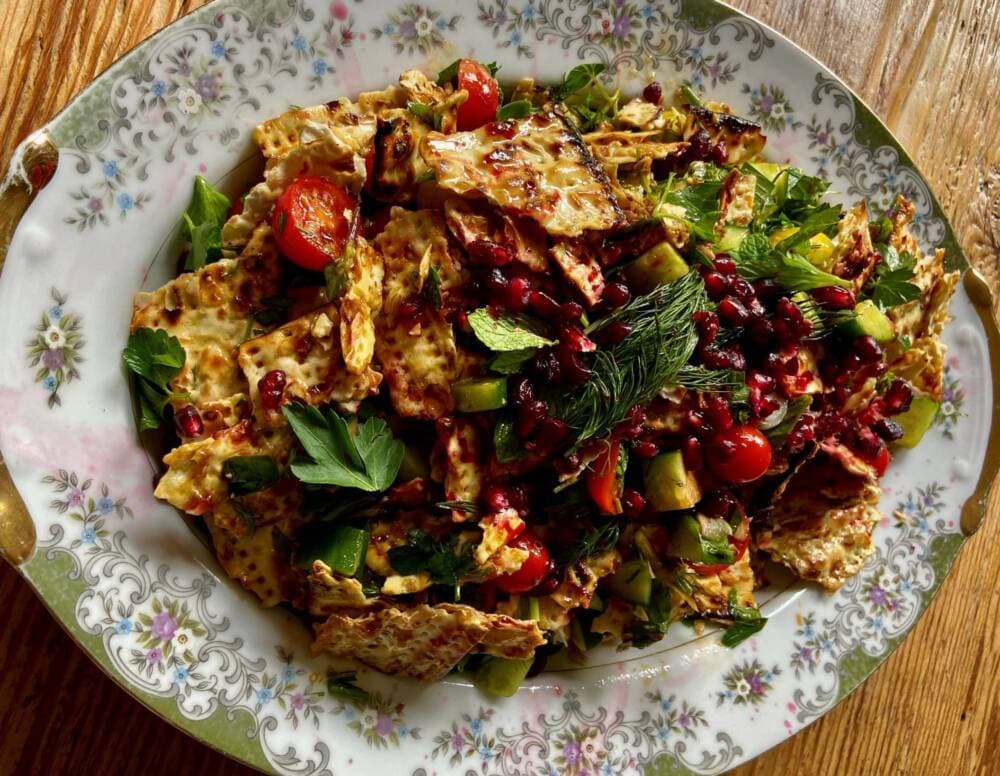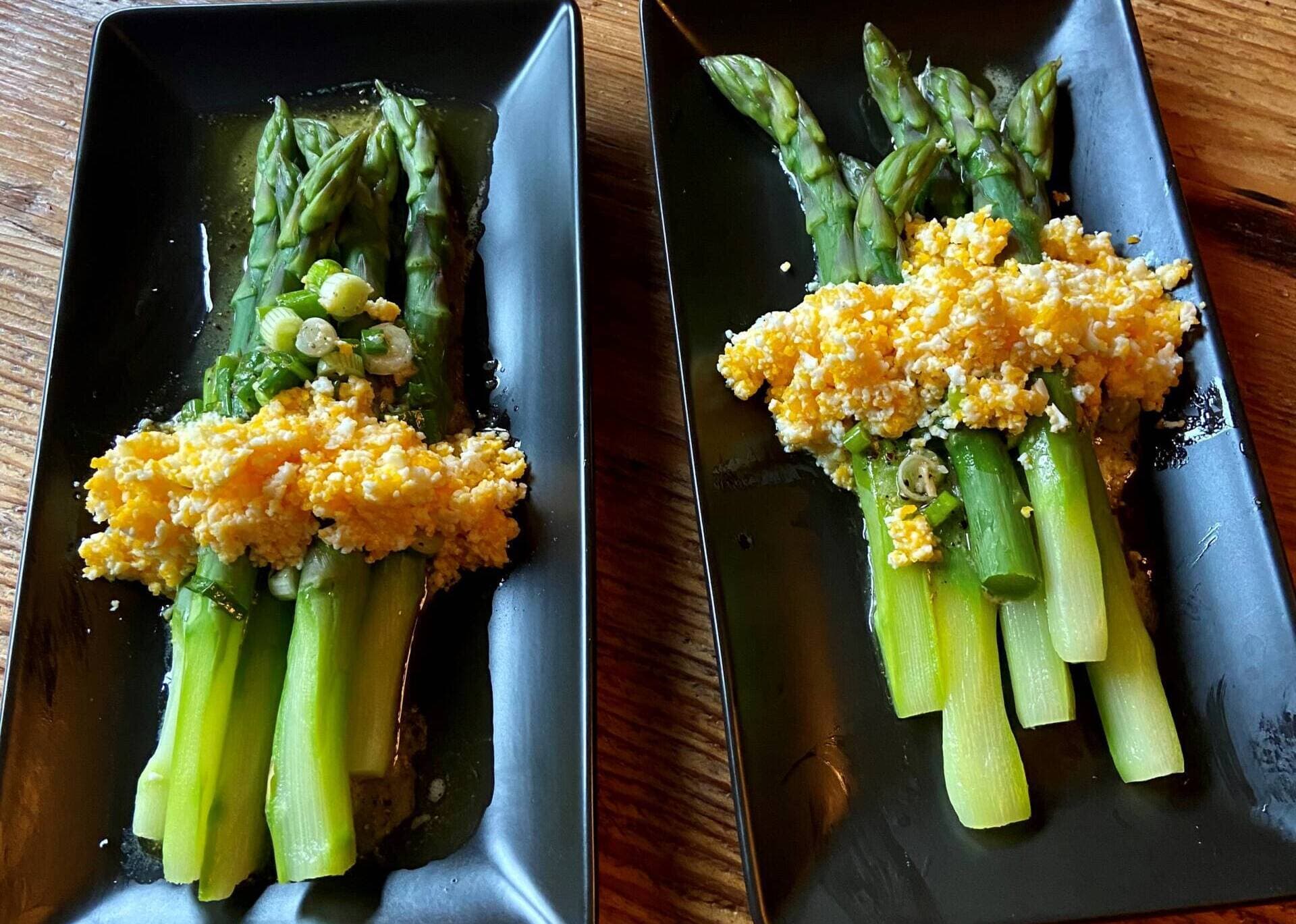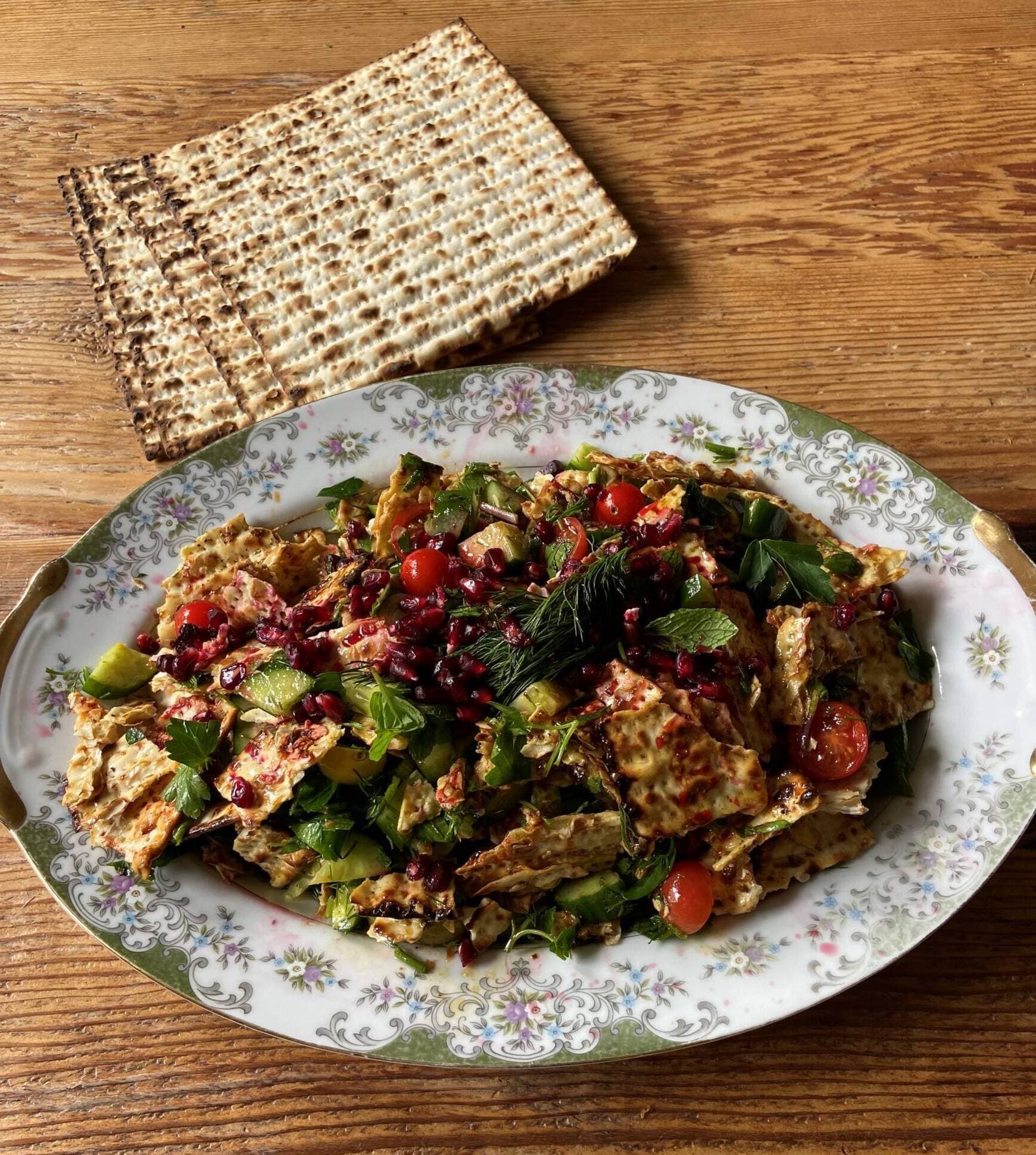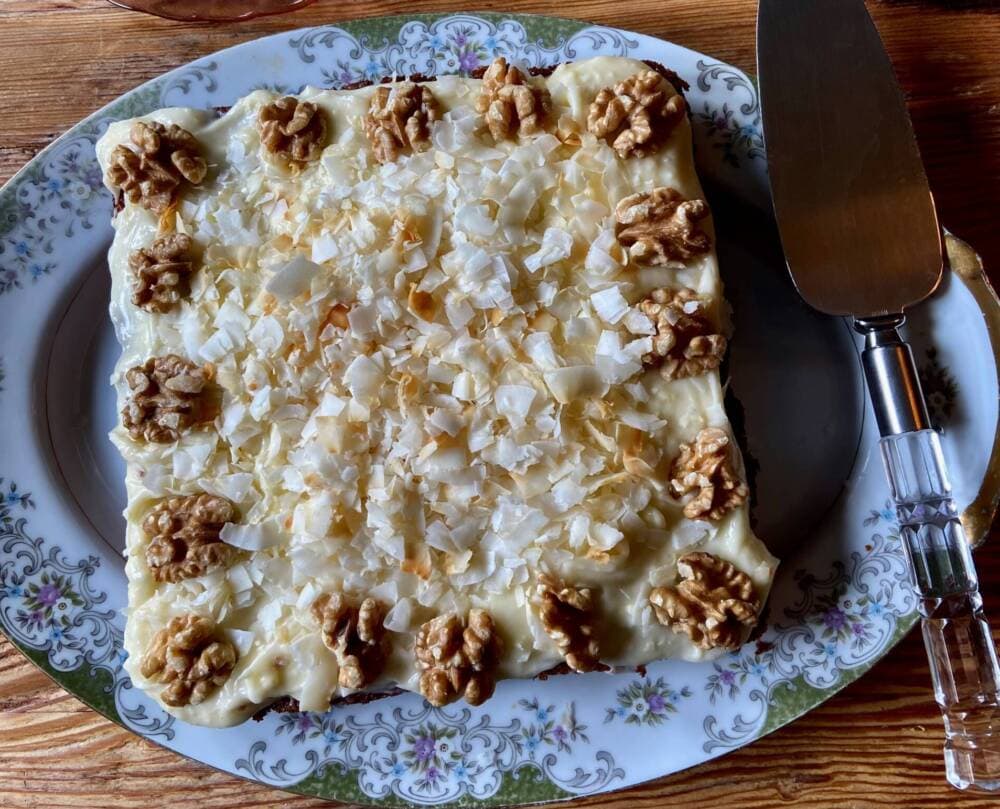Advertisement
Spring into the Passover and Easter holidays with 3 bright recipes

The spring holiday season is here. Passover begins on April 5 and ends on April 13. Jews across the country will celebrate with a traditional seder. Passover commemorates the anniversary of the exodus from Egyptian slavery as told in the Bible. Easter Sunday is April 9, when families gather and share feasts of eggs in many forms, roast ham, lamb, potatoes and other holiday dishes.
For Passover, I’ve created a take on the traditional Middle Eastern salad called fattoush, traditionally made with day-old pita bread. During Passover, Jews forgo leavened bread, so I reinterpreted the dish using matzah instead of pita. It’s tossed with olive oil, lemon and pomegranate molasses (or honey) and then tossed with cucumbers, tomatoes and lots of fresh spring herbs like mint, dill and parsley. There’s also a beautiful spring side dish of steamed asparagus with hard-boiled eggs and a horseradish salad that works well for either holiday.
Finally, there is a moist, super-easy carrot-pineapple-coconut cake to celebrate Easter or to serve for dessert at any spring celebration.

Steamed asparagus with hard-boiled egg and horseradish dressing
This simple, satisfying vegetable dish works well for Passover or Easter. The dish has many of the elements of the symbolic foods served at the Passover seder: the egg (which symbolizes rebirth and renewal) and horseradish (a symbol of the bitterness of slavery). The asparagus is lightly steamed and topped with hard-boiled eggs that are pushed through a fine sieve and then finished with a horseradish-spiked vinaigrette. The dish can be made a few hours ahead of time and dressed with the vinaigrette just before serving.
Serves 2 to 4.
Ingredients
The eggs and asparagus:
- 2 eggs
- 1 pound asparagus
The horseradish vinaigrette:
- 1 teaspoon Dijon-style mustard
- 1 tablespoon white horseradish (from the jar)
- 1 ½ tablespoons lemon juice or white wine vinegar
- 1 scallion, very thinly sliced
- 3 tablespoons olive oil
- Salt and freshly ground black pepper to taste
Instructions
- Place eggs in a medium saucepan and cover with cold water. Bring to a boil over high heat. Turn heat off, but leave the eggs in the pot on the still-hot burner and let sit in the hot water for 12 minutes. Remove from the pot and rinse under cold running water. Drain. Roll the eggs around in the empty saucepan to crack the shell slightly. Fill with cold water. Drain and fill with cold water. Drain and peel the eggs. Place the eggs through a fine sieve set over a medium bowl.
- Trim the ends off of the asparagus. Using a vegetable peeler, peel off the bottom two inches near the stem end until you hit a pale green. This makes the stem ends more tender. Bring a large skillet or pot filled with water to boil over high heat. Add the asparagus and reduce the heat to medium; simmer for 5 to 7 minutes depending on the thickness and freshness of the asparagus. The asparagus should be just tender and not falling apart or mushy. Drain under cold running water; drain again.
- Make the vinaigrette: In a small bowl mix the mustard, horseradish, lemon juice, scallion, olive oil, salt and pepper. Taste for seasoning.
- Place the asparagus on a serving plate and spoon the vinaigrette over it. Arrange the chopped egg in the middle of the asparagus spears.
Advertisement
Matzah fattoush
Fattoush is a Middle Eastern salad from Lebanon, Syria and Palestine that uses day-old pita bread as a salad base. Here I substitute crisp matzah, cut into bite-size pieces, making it ideal for Passover.

The matzah pieces are tossed with olive oil, lemon juice, and pomegranate molasses (or honey and pomegranate juice) until slightly softened. The matzah is then tossed with cubes of cucumbers and tomatoes, fresh dill, mint, parsley and, finally, sprinkled with pomegranate seeds if you like. It’s a beautiful spring salad full of color and crunch.
Serve within an hour or two for the best texture. The longer it sits, the less crunch the matzah will provide.
Serves 4 to 6.
Ingredients
- 4 sheets of matzah, broken into bite-sized pieces
- About ⅓ cup olive oil
- 3 tablespoons pomegranate molasses or 2 tablespoons honey mixed with 1 tablespoon pomegranate juice
- About 3 tablespoons lemon juice
- Salt and freshly ground black pepper
- 1 teaspoon sweet paprika, optional
- 1 ½ cups English or Persian cucumbers, peeled or unpeeled, and cut into small pieces
- ½ cup cherry tomatoes, halved
- ¼ cup fresh parsley, coarsely chopped with stems
- 3 tablespoons fresh mint coarsely chopped
- 3 tablespoons fresh dill, coarsely chopped with stems
- 1 scallion, thinly sliced
- ½ cup pomegranate seeds, optional
- Fresh mint leaves for garnish
Instructions
- Place the matzah in a large bowl and gently toss with the ⅓ cup olive oil, pomegranate molasses, lemon juice, salt, pepper and paprika. Let sit for 5 minutes.
- Add the cucumbers, tomatoes, parsley, mint, dill, and scallion and gently toss everything together. Season to taste. If the salad seems dry, add additional olive oil and lemon juice as needed. The salad should not be swimming in oil and lemon, but lightly coated. Scatter the pomegranate seeds on top and garnish with fresh mint leaves.
Carrot, pineapple and coconut cake with vanilla cream cheese frosting

This is not a fussy carrot cake, but a real treat ideal for the Easter holiday. The cake batter is mixed together in no time and baked in a standard 8-by-8-inch square (brownie) pan. While the cake bakes, you make the frosting: Whip up butter, cream cheese and vanilla extract with confectioners’ sugar in minutes. The result is an exceedingly moist cake, brimming with the flavors of carrots, pineapple and toasted coconut.
Serves 6.
Ingredients
The cake:
- 1 cup unsweetened shredded coconut
- ½ cup walnut halves, optional
- Vegetable oil for coating the pan
- 1 cup all-purpose flour
- 1 teaspoon baking powder
- 1 teaspoon baking soda
- 1 teaspoon ground ginger
- 1 teaspoon ground cinnamon
- ¼ teaspoon salt
- 4 medium carrots, grated (1 ½ cups)
- 8.25-ounce can crushed pineapple in syrup
- ¼ cup golden or regular raisins
- ¾ cup plus 1 tablespoon sugar
- ½ cup vegetable oil
- 2 large eggs
The vanilla cream cheese frosting:
- 4 ounces cream cheese, at room temperature
- 4 tablespoons butter, at room temperature
- 1 teaspoon vanilla extract
- About 1 to 1 ½ cups confectioners’ sugar
Instructions
- Bake the cake: Preheat the oven to 350 degrees. Place the coconut on half a cookie sheet and the walnuts on the other half and bake for about 6 to 8 minutes, or until the coconut is lightly browned and the nuts are aromatic. Set aside to cool.
- Grease an 8x8 square inch baking sheet with vegetable oil.
- In a medium-large bowl whisk together the flour, baking powder, baking soda, ginger, cinnamon and salt.
- In another bowl mix together the carrots, pineapple, raisins, and ½ cup of the toasted coconut and set aside.
- Using a handheld mixer or a mixer with a paddle attachment, whisk together the sugar and oil for 2 minutes. Add the eggs, one at a time, beating together until the batter is smooth. Reduce the speed to low and carefully add the flour/spice mixture and beat until just incorporated. Stir in the carrot/pineapple/raisin mixture until just incorporated.
- Spoon the batter into the prepared cake pan and bake on the middle shelf for about 1 hour, or until a toothpick inserted in the center of the cake comes out clean and the cake is beginning to pull away from the sides of the pan. Remove and cool for 10 minutes. Using a flat kitchen knife, work your way around the cake to loosen it. Place a cooling rack on top of the cake and flip the cake. Flip again. Let cool to room temperature.
- Meanwhile, make the frosting: Using a handheld mixer or a stand mixer with the paddle attachment, mix the cream cheese and butter until smooth, about 5 minutes. Use a soft spatula to clean the beaters and the sides of the bowl so everything is whipped together. Add the vanilla extract and slowly add the sugar, about 1⁄2 cup at a time. Beat until smooth and creamy. Taste after you’ve added 1 cup of sugar. I don’t like the frosting overly sweet, but feel free to add the additional ½ cup sugar if you like.
- When the cake is fully cooled use a soft spatula or offset spatula and spread the top with the frosting. Sprinkle with the remaining ½ cup of the toasted coconut and arrange the toasted walnuts along the edges. Serve at room temperature or chill overnight and bring to room temperature before serving.
Other spring recipes
- Click here for Meyer lemon curd tart with strawberries and pistachio dust, angel food cake with vanilla whipped cream and spring berries, and flourless chocolate and orange cake.
- Click here for macaroons, matzah candy and meringue cake.
- Click here for toasted pistachio, apricot, date, apple and spiced charoset, pavlova meringue cake, and Nancy’s chicken soup.
- Click here for potato gratin with pesto and pancetta, roast potatoes with sea salt and herbs, and potato galettes stuffed with greens and gruyere.
- Click here for lamb recipes, ideal for Passover or Easter.
- Click here for asparagus and ham quiche and three-onion galette.
